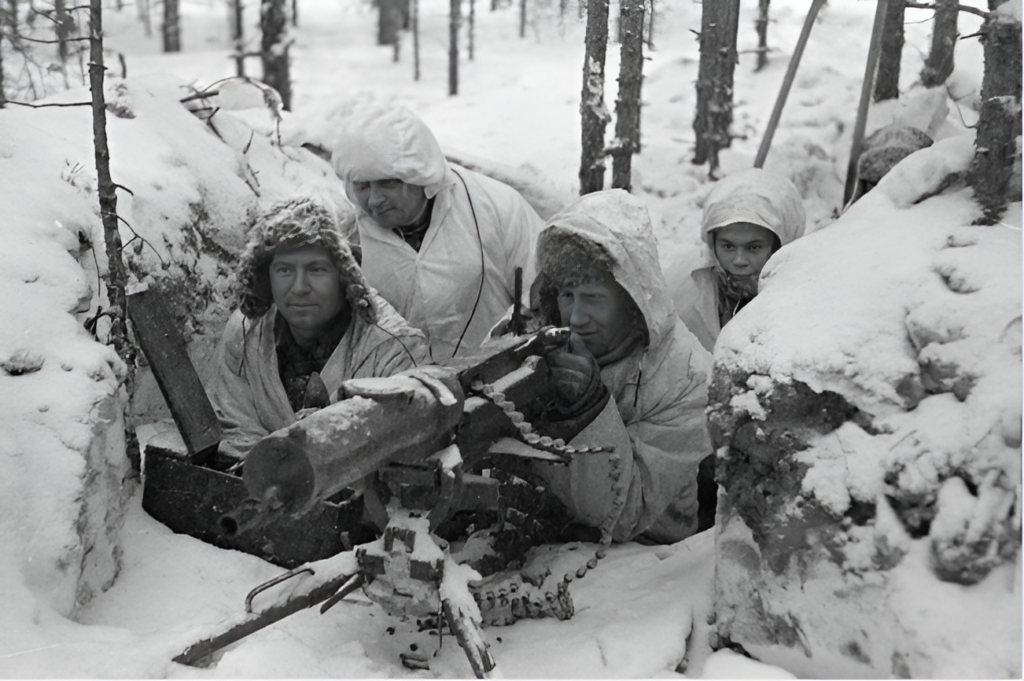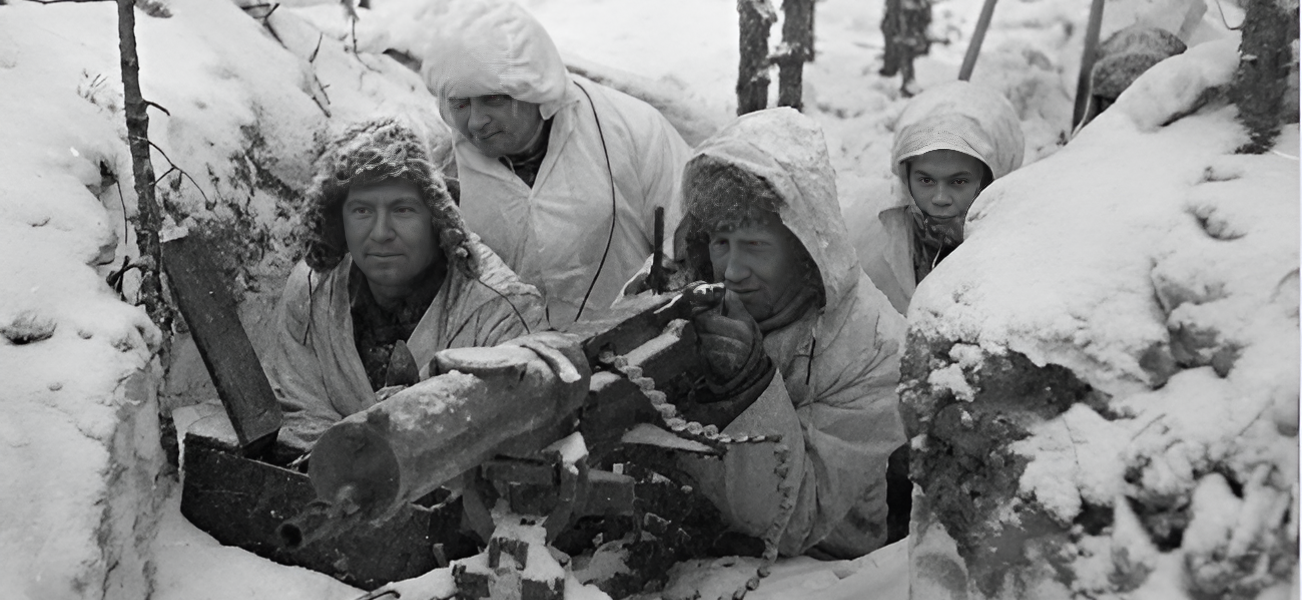
The 60th birthday of Soviet dictator Joseph Stalin on December 21, 1939, marked a low point for the Red Army’s invasion of Finland. Just weeks earlier, Andrei Zhdanov, the party head of Leningrad, had optimistically promised to deliver Finland’s surrender as a gift to Stalin. Instead, Leningrad’s hospitals were soon flooded with wounded soldiers as the Red Army suffered massive casualties. What was initially intended to be a swift victory turned into a protracted and costly struggle.
On November 30, 1939, Soviet forces—four armies comprising 450,000 men—invaded Finland, aiming to breach the Mannerheim Line, a well-defended series of bunkers and fortifications stretching 90 miles along the Finnish-Soviet border. The assault, conducted across eight axes of advance, was intended to crush Finland’s defenses in a matter of weeks. Yet, the Red Army faced unexpected resistance. Field Marshal Carl Gustav Emil Mannerheim, a former Tsarist officer, led Finnish forces to stunning victories. The Finnish military, armed with smaller numbers but superior tactics, inflicted devastating losses on the Soviets in the Battle of Tolvajäri and the battles of Suomussalmi and Raate Road, decimating Soviet units and forcing them into retreat.
Despite the early Soviet setbacks, the war eventually tipped in favor of the Soviet Union, thanks to a strategic and tactical adaptation by the Red Army, a process often overlooked in historical assessments. In many ways, the Soviet response to Finland’s defensive triumphs mirrors Russia’s actions in Ukraine today: a remarkable ability to adapt, despite severe initial losses.
Attrition and Combined Arms Maneuver: Soviet Tactical Evolution
While the Finnish resistance is often celebrated for its heroic defense, the Soviet adaptation deserves more attention, particularly in how the Red Army shifted from initial failures to a slow but inevitable victory. Early Soviet tactics—relying on brute force and massed numbers—were initially ineffective against the well-prepared Finnish defenses. The assumption that superior numbers alone would win the day was proven wrong. Instead, the Red Army had to retool its approach entirely.
At the operational level, the Soviet high command switched to a strategy of attrition. Rather than attempting a rapid breakthrough, Soviet forces opted for a methodical wearing down of the Finnish defenders. The Red Army applied overwhelming firepower, including artillery barrages, and relied on a slower, more deliberate advance that involved combined arms operations—coordination between infantry, artillery, and tanks.
This shift in strategy proved crucial. Soviet forces abandoned the deep battle doctrine—designed for rapid thrusts into enemy territory—and instead focused on localized, concentrated attacks along narrow fronts. The Karelian Isthmus became the focal point of the Soviet offensive, with the capture of Viipuri and the threat to Helsinki serving as key objectives.
The Soviet Turnaround: From Setbacks to Success
By January 1940, it became clear that the initial Soviet plan, which relied on a quick victory, was not going to work. The weather and terrain—harsh subarctic conditions and thick forests—thwarted Soviet attempts at rapid movement. Additionally, Finnish forces remained resilient, using the terrain to their advantage and executing surprise attacks that isolated and destroyed Soviet columns.
In response, the Soviet command restructured its forces. Soviet generals like Semyon Timoshenko and Georgi Zhukov took charge and immediately implemented a strategy based on sheer attrition. The Soviets focused on overwhelming the Finnish defenses with a massive artillery bombardment, followed by coordinated tank and infantry assaults. While initially plagued by disorganization, the Soviet forces eventually mastered combined arms operations, an essential shift for breaching the Mannerheim Line.
Timoshenko’s approach was to attack with overwhelming firepower, focusing on artillery and tank support for infantry assaults. Soviet infantry and tanks worked in close coordination to exploit weaknesses in Finnish defenses. Soviet air support provided additional firepower, although initially, many attempts to coordinate air support with ground forces were haphazard. Still, these efforts were enough to put the Finnish defenders on the back foot.
Breaking the Mannerheim Line
The culmination of these tactical changes occurred in early February 1940, when Soviet forces launched a massive assault on the Mannerheim Line. The attacks on the key defensive positions—such as the “Millionaire” and “Poppius” bunkers—were preceded by a relentless bombardment of over 300,000 shells fired in a 24-hour period. The artillery barrage softened the Finnish defenses, allowing Soviet tanks and infantry to advance.
The capture of these key bunkers was a decisive moment. Despite some setbacks, such as a lack of tank support in marshy terrain, Soviet forces began to systematically dismantle the Mannerheim Line. Finnish troops, already low on ammunition and supplies, struggled to hold out. The Red Army’s methodical approach—combined with unrelenting firepower—eventually forced Finnish forces to retreat.
By February 13, Soviet forces broke through a second line of Finnish defenses, effectively rendering the Mannerheim Line untenable. Despite continued resistance, the Soviet offensive continued to grind down the Finnish position, leaving them no choice but to seek peace negotiations.
Conclusion: The Lessons of the Winter War
The Soviet victory in the Winter War, while costly, was ultimately the result of strategic, tactical, and organizational adaptation. The initial Soviet failures—marked by disorganization, poor logistics, and ineffective tactics—gave way to a more methodical, firepower-centric approach. The Red Army’s ability to adapt, reorganize, and learn from its early mistakes allowed it to achieve its military objectives.
As we draw parallels with the ongoing conflict in Ukraine, it becomes clear that both the Winter War and the war in Ukraine share a common thread: the resilience of the underdog and the ability of adversaries to adapt to changing circumstances. While Finland’s victory was not entirely in vain—it preserved its sovereignty—the eventual Soviet triumph in the Winter War proved that the Red Army could learn, adapt, and ultimately succeed, even in the face of early disaster.
This story serves as a reminder: the struggle of smaller forces against overwhelming power is not always hopeless. Adaptation, determination, and the will to fight can turn the tide in the most unlikely of circumstances.




